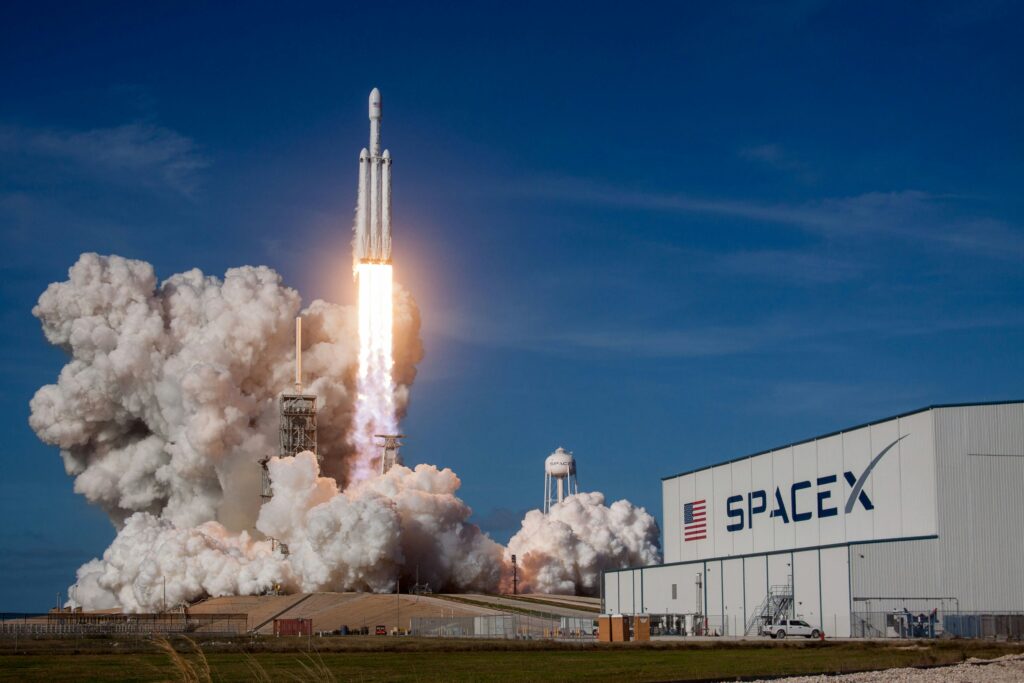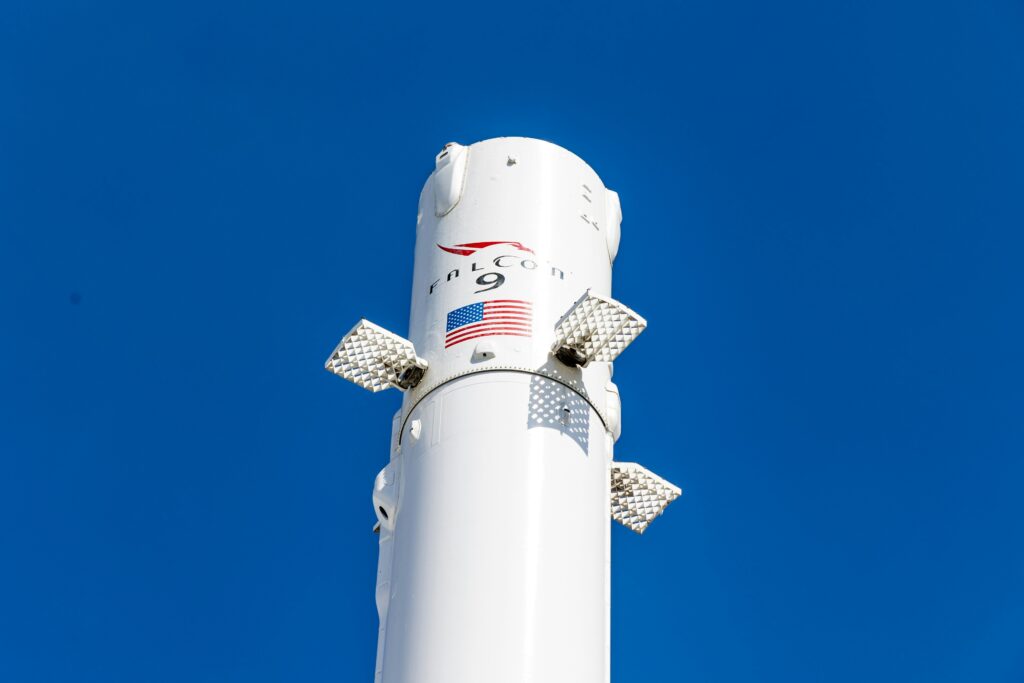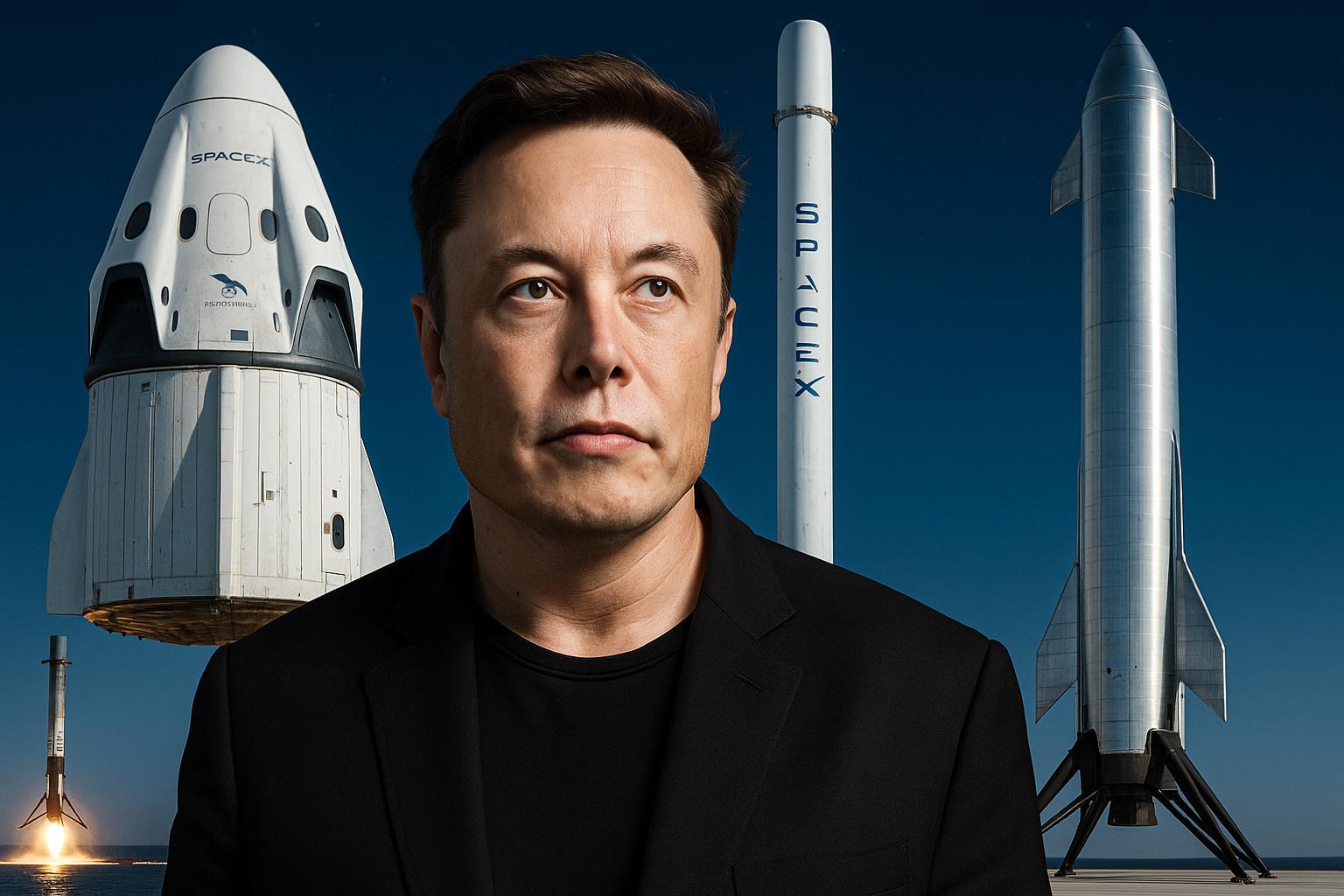
Quick Navigation:
Must Read – Elon Musk’s Tesla: A Powerful Tech Company 2025
SpaceX Foundation: Vision, Values, And The Mission to Mars:
SpaceX wasn’t founded as just a company – it was meant to make humanity multi-planetary. When Elon Musk started SpaceX (Space Exploration Technologies Corporation) in 2002, people thought it was some crazy billionaire’s dream. But today, it has become the world’s most successful private space company.
SpaceX’s main mission is: “To reduce space transportation costs and make colonization on Mars possible.” Behind this vision is a firm belief – that if something goes wrong with Earth, humanity must have a backup plan. Musk believes that building a sustainable city on Mars is essential for long-term survival.
In the early days of the company’s founding, Musk invested his personal money to build the first rocket – Falcon 1 By 2008, after three failures, the fourth attempt was successful, which enabled SpaceX to win NASA’s trust. Today, SpaceX has reusable rockets like the Falcon 9, Falcon Heavy, and Starship, which are the tools needed to make this mission a reality.
SpaceX is built not just on engineering, but on courage, risk-taking, and visionary thinking. With each launch, that foundation grows stronger – leading us into a new space age.
SpaceX Milestones: Year-By-Year Breakthroughs:
2008 – Falcon 1 reaches orbit

On September 28, 2008, SpaceX’s Falcon 1 Flight 4 became the first privately funded, fully liquid-fueled rocket to reach orbit. And this success changed the world of private space missions.
2010 – Dragon reaches orbit and returns
On December 9, 2010, Falcon 9 launched the Dragon spacecraft (COTS Demo Flight 1), the first private company to reach orbit and return a spacecraft safely.
2012 – Cargo to the International Space Station
On May 25, 2012, SpaceX’s Dragon docked with the International Space Station – making it the first private company to deliver cargo to the International Space Station.
2013 – SES-8 in GTO
On December 3, 2013, Falcon 9 launched the SES-8 satellite into geosynchronous transfer orbit (GTO)—a global commercial achievement.
2015 – First stage lands vertically
On December 22, 2015, Falcon 9 Flight 20 performed the first ever vertical landing of an orbital-class rocket’s first stage on the ground.
2016 – Successful drone ship landing
On April 8, 2016, Falcon 9’s first stage made its first successful landing on a sea-based drone ship (CRS-8).
2018 – Falcon Heavy test flight
On February 6, 2018, SpaceX launched Falcon Heavy—the most powerful operational rocket at the time and capable of lifting huge payloads.
2020 – Crewed Orbital Mission (Crew Dragon Demo-2)
On May 30, 2020, SpaceX became the first private company to launch humans into orbit using Crew Dragon. Missions Demon-1 and Demo-2 achieved historic success.
2023 – Starship Reaches Orbit
On April 20, 2023, Starship conducted its first orbital flight test, marking it as the highest and most powerful rocket ever flown. Although the vehicle later exploded, the upper stage reached orbit—a huge leap.
2025 – Starship Flight Test 7
On January 16, 2025, Starship Flight Test 7 (booster 14 and ship 33) launched. The Super Heavy booster landed successfully, although an anomaly in mid-flight caused Starship’s upper stage to be lost.
Must Read – The Incredible Bitcoin Journey from 2011 to 2025
Rethinking rocket science: The Technology Behind SpaceX’s Reusability:
SpaceX has literally reimagined rocket science. Previously, rockets would fall into the ocean after every mission and could not be reused, SpaceX has broken this old model. Their Falcon 9 rocket is the world’s first orbital-class launch vehicle that can fly multiple times. The most innovative part of this is the reusability of the boosters – the most expensive part of the rocket lands and is brought back to base, prepared and launched again.
All of this is made possible due to advanced engineering such as grid fins, cold gas thrusters and automated drone ships on which the rockets land – sometimes even in the middle of the ocean. This not only reduces costs (about 60% cost savings per launch) but also increases mission frequency. Falcon 9 boosters have been reused more than 20 times so far, which was never thought of before.
Elon Musk’s vision is to make space travel as affordable and routine as airplane travel – and SpaceX’s reusability model is a big step in that direction. This innovation is also laying the foundation for future Mars missions.
Inside The Starship: Engineering Blueprints for Interplanetary Travel:
SpaceX’s Starship project isn’t just a rocket—it’s a complete blueprint for interplanetary travel. Elon Musk’s dream is to colonize Mars, and Starship is a key part of that dream. The rocket system is divided into two main parts—the Starship upper stage and the Super Heavy booster. Both are made of stainless steel, which provides high durability as well as thermal resistance, especially when the rocket leaves the atmosphere and returns.
Starship’s design is unique—it can carry more than 100 people along with cargo and fuel storage. Its newest part is its heat shield system that can return to space at extreme temperatures without burning up. The Super Heavy booster has 33 Raptor engines that run on methane and liquid oxygen—an environmentally friendly and Mars-friendly fuel that can be produced on Mars.
Another important feature is in-orbit refueling, which makes long-distance space travel (such as Mars missions) economically and technically feasible. This means that one Starship will launch into space and refuel from another Starship — just like fighter jets are refueled in mid-air.
This technology is preparing SpaceX to go not only from Earth to space, but from Earth to Mars and beyond. Visionary indeed!
Merlin And Raptor Engines: Powering The Next Generation of Flight:
SpaceX’s two most iconic rocket engines – Merlin and Raptor – have become the backbone of modern space flight. The Merlin engines, used in the Falcon 9 and Falcon Heavy rockets, run on kerosene and liquid oxygen (RP-1 + LOX). Their simplicity and reliability have made the Falcon 9 the world’s most successful orbital rocket. Each Falcon 9 first stage contains nine Merlin engines, which together produce up to 1.7 million pounds of thrust!
But the real future of SpaceX is the Raptor engines. These engines are for the Starship and Super Heavy boosters. The Raptor engines use methane + liquid oxygen (CH₄ + LOX), making them more efficient and Mars-friendly. Since methane can be produced only on Mars, they are the perfect fuel for long-term space missions.
The Raptor engine’s full-flow staged combustion cycle is an advanced technology that provides maximum efficiency and reduced thermal stress. These are the world’s first reusable engines to operate successfully on a single cycle. Each Super Heavy booster has 33 Raptor engines, and the Starship upper stage has 6 – all of these systems together produce more than 16 million pounds of thrust!
In short, Merlin got SpaceX into orbit, and Raptor is taking it into the interplanetary era.
Must Read – Ethereum Explained: The Powerful Rise of ETH in 2025 and Beyond
Autonomous Landing System: How SpaceX Achieves Precision Landings:
One of SpaceX’s most revolutionary technological features is their Autonomous Landing System – a technology that specializes in landing the rocket back on Earth without any manual control. When a Falcon 9 rocket completes its mission, its first stage booster automatically returns and lands with pinpoint accuracy on a floating drone ship or land pad. This technology is called VTVL – Vertical Takeoff, Vertical Landing.
All of this is made possible by a combination of advanced GPS-guided navigation, inertial measurement units, and real-time engine gimbal controls. The booster calculates its exact location, processes wind speed and trajectory data, and adjusts engine throttle for landing in microseconds.
SpaceX’s drone ships like “Of Course I Still Love You” and “Just Read the Instructions” are also powered by AI, providing the booster with an ideal landing site despite changing ocean conditions.
This cutting-edge system enables SpaceX to build reusable rockets – dramatically reducing costs. Falcon 9 boosters have made over 50 successful landings, many of which have reused the same booster for multiple missions.
This is the future of space travel – precise, autonomous and sustainable.
Launch, land, repeat: The Software That Makes It All Possible:
SpaceX’s reusable rockets aren’t just successful because of their hardware—their real magic lies in their software architecture. When we say “launch, land, repeat,” we mean an automated system that controls the entire launch cycle—from takeoff to landing—at the millisecond level.
SpaceX’s flight software performs millions of calculations in real-time to adjust the rocket’s position, velocity, and trajectory. This software is built in high-performance programming languages like C++ and Python, optimized with highly optimized algorithms. Every second, data is collected from the rocket’s sensors—gyroscopes, GPS, altimeter, and barometer—and then an AI engine adjusts the gimbal based on that data.
Another key component is the redundancy system. If one of the processors fails, the backup system immediately takes over. This ensures that no glitch causes the mission to fail.
This software for rockets like the Falcon 9 and Starship is designed to accurately locate a landing pad or drone ship, whether it’s on Earth or Mars.
These smart systems are why SpaceX is achieving multiple reusability, making space travel faster, cheaper, and more reliable – just like updating your iPhone software and launching it into space!
Final Thoughts:
SpaceX has taken space technology to a new level—where rockets are no longer one-time use items, but reusable machines. Whether it’s the bold design of Starship, the precision landing of Falcon 9, or the powerful Raptor engines—SpaceX has become a symbol of innovation at every level.
Elon Musk’s dream of creating “multi-planetary life” is no longer just a dream—it’s becoming a reality step by step. SpaceX has proven that private companies can make the impossible possible. And the years ahead are going to be even more exciting for space exploration.
Must Read – Samsung Galaxy Unpacked 2025: Exciting Launch of Fold7, Flip7 FE & Watch8 with Game-Changing One UI 8


2 thoughts on “Inside SpaceX: The Powerful Technology Behind Elon Musk’s Space Revolution (2025)”